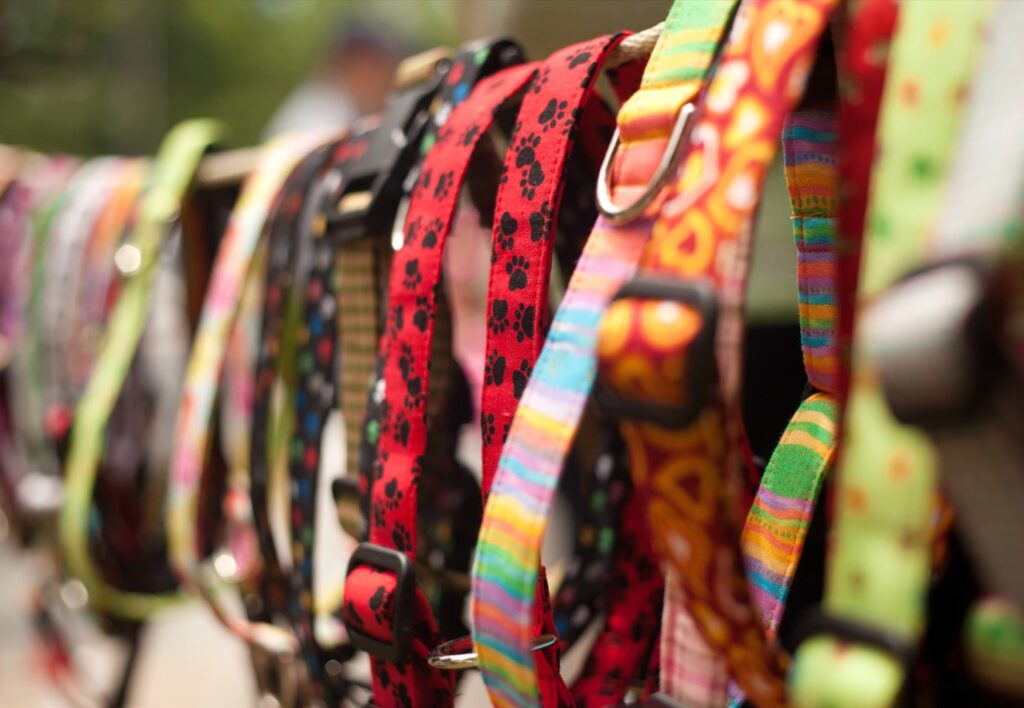
Choosing a suitable dog collar can be tricky. One key fact is that durability plays a massive role in your choice. This article will guide you through what to look for, making the decision easier.
Keep reading for insights.
Key Takeaways
- To guarantee that the collar suits properly, have your dog’s neck measured. It should not be too tight or too loose. This is for safety and comfort.
- Consider your dog’s size, breed, and activities when choosing a collar type. It could be for daily walks or specific training needs.
- Look into collar personalization options. Offer choices that cater to pet owners’ preferences in style and safety.
- Understand the differences between collar types. These include slip-on, buckle, martingale, and prong collars, as well as harnesses. Match each to each dog’s needs well.
- Make sure the collar material is durable. It should be comfortable for your dog to wear every day. It should not cause irritation or discomfort.
Why Dog Collars Are Important
Dog collars help people know who owns a dog if it gets lost. They also keep dogs safe when they are outside.
Identification
A name-tag-adorned dog collar is a necessity for locating your companion in the event that they become lost. It holds vital info like your dog’s name and your contact details. This small step can make a big difference in reuniting with your furry friend.
Many online stores offer customizable tags. They fit well on various collars and ensure safety and style.
Choosing the correct type of collar for identification purposes matters too. Options range from slip-on styles to adjustable ones. The adjustable ones have secure buckles and work for dogs of all sizes and builds.
Picking one that’s easy to read and durable ensures it stays legible and intact. It will last even during rough play or lousy weather.
Safety
Dog collars significantly contribute to the safety of your furry companion. Making sure the collar is the right fit is crucial. Too tight, and it can hurt your dog; too loose, and they might slip out and get lost.
Always measure your pet’s neck before buying a collar to ensure safety and comfort.
Choosing a durable collar is also vital for safety. It must withstand pulling, playing, and all outdoor activities without breaking. A strong collar means it won’t snap when you’re out walking or in training.
Safety comes first, so pick a collar that will keep up with your dog’s adventures.
Training
Dog collars play a big part in teaching your furry friends. They help keep dogs safe while they learn new things. It’s critical to pick the suitable collar for training, one that fits well and keeps your pup comfortable.
Think about what you and your dog do together. A robust and durable collar is best if you spend lots of time outdoors.
Safety should be on your mind too, especially with training collars. You want something that guides them without hurting or scaring them. The market offers different styles. For example, martingale collars offer gentle control. Slip-on options are for quick learning sessions.
Always measure your dog’s neck to make sure the fit is just right. This step makes training safer and more enjoyable for both of you.
When to Start Using a Dog Collar
Start putting a collar on your dog as soon as they join your family. Puppies can wear collars by eight weeks old, making sure they fit just right—not too tight or loose.
Age and Size Considerations

Picking the right time to introduce a dog collar is crucial. Puppies can start wearing a lightweight collar by 8 weeks old. This early start helps them get used to the feeling. Yet, each dog grows at its own pace.
So, it’s vital to choose a collar that adjusts easily as your furry friend grows.
Always measure your dog’s neck before you buy a collar. It is critical that they have a secure but comfortable fit for their safety and comfort. For puppies and smaller dogs, aim for a one-finger gap between the collar and neck.
Larger breeds might need two fingers’ space for the best fit. Keep an eye on your growing pup. Adjust or replace their collar as required. This will ensure they’re always safe and comfy during your activities together.
Proper Fitting
Measuring your dog for a collar is essential. etermine the measurement of the collar that will fit around your pet’s neck using a measuring tape. . This step ensures the collar fits snugly but isn’t too tight.
A decent rule is to put two fingers between the collar and your dog’s neck. This space stops the collar from causing discomfort or harm.
Choosing the right fit also depends on your dog’s shape and size, not just their weight or breed. For example, a lean greyhound will need a collar that is different from that of a stocky bulldog.
Look at options that suit their unique needs, keeping comfort and safety in mind. Always check for signs that suggest if it’s too loose or tight after putting it on your dog for the first time.
Adjustments might be necessary as they grow or change shape.
Dog Collar vs. Harness
Choosing a dog collar over a harness for your business could have a big impact on the canines. It could affect their comfort and safety. It’s about knowing what each option brings. This ensures you make the best choice for your clients. Here’s a simple breakdown to guide your decision:
| Feature | Dog Collar | Harness |
|---|---|---|
| Control | Good for dogs that walk calmly | Better for pulling or jumpy dogs |
| Training | Useful for basic training | Not typically used for training |
| Safety | Can slip off if not properly fitted | More secure, stays on better |
| Comfort | Can strain neck with too much pulling | Reduces stress on neck, distributes force |
| Health Concerns | Not ideal for dogs with breathing issues | Better choice for dogs with respiratory problems |
| Identification | Easy to attach ID tags | May need a separate ID tag solution |
| Style | Wide range of designs | Varied designs, but bulkier |
In short, the right choice depends on the size and behavior of the dog, as well as the activities you plan for them. Collars are a go-to for well-behaved walkers, offering an easy way to carry ID. They provide better control and comfort. They work best for active dogs or those with health issues. Keep these factors in mind, and you’ll cater to your clients’ needs effectively.
Factors to Consider Before Purchasing a Dog Collar
Choosing the right dog collar involves more than just picking a color. Think about the size and strength of your dog, what you guys do together, and how the collar fits. Will it be for daily walks or training? Make sure it’s comfortable and suits their neck shape.
Also, think about if you want their name on it. This guide helps you focus on these critical points to find the perfect match. Ready to learn more? Keep reading to ensure your furry friend gets the best fit!
Size and Build of Your Dog
Your dog’s size and build are key factors in choosing the suitable collar. Small dogs need lightweight and comfortable collars that won’t weigh them down. Big dogs require solid and durable collars that can handle their strength without breaking.
Measure your pet carefully to find a perfect fit. Use a tape measure for accuracy, ensuring the collar is snug but not tight.
Different activities demand different types of collars. These collars are for active pets. They love running and exploring. Look for collars made from tough materials, like nylon or leather. These stand up well to wear and tear.
Always check the collar’s quality before buying. Make sure it will last through all your adventures together.
Activities You Do with Your Dog
Picking the right dog collar also depends on the fun stuff you do with your pooch. If long walks or runs are part of your routine, a durable and comfortable collar is key. Think about those times you spend exploring new trails or parks.
Your dog’s collar needs to keep up with all that action.
For those who like relaxing activities, such as hanging out at cafes or visiting friends, style might be as key as function. A personalized collar can make your dog stand out in any social setting.
Always consider the mix of activities in your life to ensure your furry friend is ready for anything.
Type of Collar
Choosing an appropriate harness for your dog is extremely important. A big, strong dog needs a sturdy collar that can handle their strength. A small or delicate canine requires something lighter. It must be more gentle on their neck.
It is critical to precisely measure your pet before making any purchases.
Consider what you and your dog like to do together. For example, if you enjoy outdoor adventures like hiking or swimming, check out collars. They are waterproof and reflective. They are made for safety and durability in rough conditions.
Meanwhile, indoor dogs might do well with a simple yet stylish slip-on or buckle option. It should match their easygoing lifestyle. Always keep comfort in mind to ensure your furry friend feels good wearing it throughout the day.
Comfort
A collar should never be too tight or too loose on your dog. It must fit just right to keep them comfortable and happy. Think about the collar’s material as well. Soft fabrics or padded options are great for everyday wear.
They won’t rub against your dog’s neck or cause irritation.
Think about where you’ll attach a leash. A strong D-ring metal loop is key for secure walks with no worries about breaks. Your clients want their dogs to feel good while looking sharp on walkies and at the park.
Offer collars that mix style with comfort. They’ll make pet parents happy with their choice. This will bring them back to shop more at your online marketplace or e-commerce store!
Neck and Head Structure
The structure of a dog’s neck and head varies by breed. This makes choosing the suitable collar important. Some dogs have wide necks but small heads, like Greyhounds. Others, such as Bulldogs, have short necks that are thicker compared to their heads.
Before purchasing a collar, be sure to carefully measure your dog. Make sure it fits snugly around the neck without slipping over the head too easily.
Safety is also key for collars based on a dog’s neck and head build. A collar that’s too loose can get caught on things, risking injury. For dogs with wider necks, not heads, consider collars that adjust in size. Also, consider martingale collars. They tighten gently when the dog tries to pull away. This prevents escape without choking them.
Always pick a collar that matches your pet’s size and activities for both comfort and safety.
Personalization Options
Personalization options let you make each dog collar unique.You can select colors and materials, as well as add names and phone numbers. This makes it easy for customers to find a collar that fits their dog’s personality and needs.
For your business, offering these choices helps you stand out. This is true in online marketplaces like Amazon or Shopify. Your brand becomes more appealing. Buyers seek something special for their dogs.
Adding custom tags or embroidery offers an extra touch of care. This service shows your attention to detail and commitment to quality. It also increases the value of each collar, improving profit margins for your company.
Your clients will appreciate the ability to design unique collars. The collars keep their pets safe and stylish.
Understanding Different Types of Dog Collars
Choosing the right collar for your dog is crucial. Each type has its own use and benefits.
Slip-on Collars: Pros and Cons
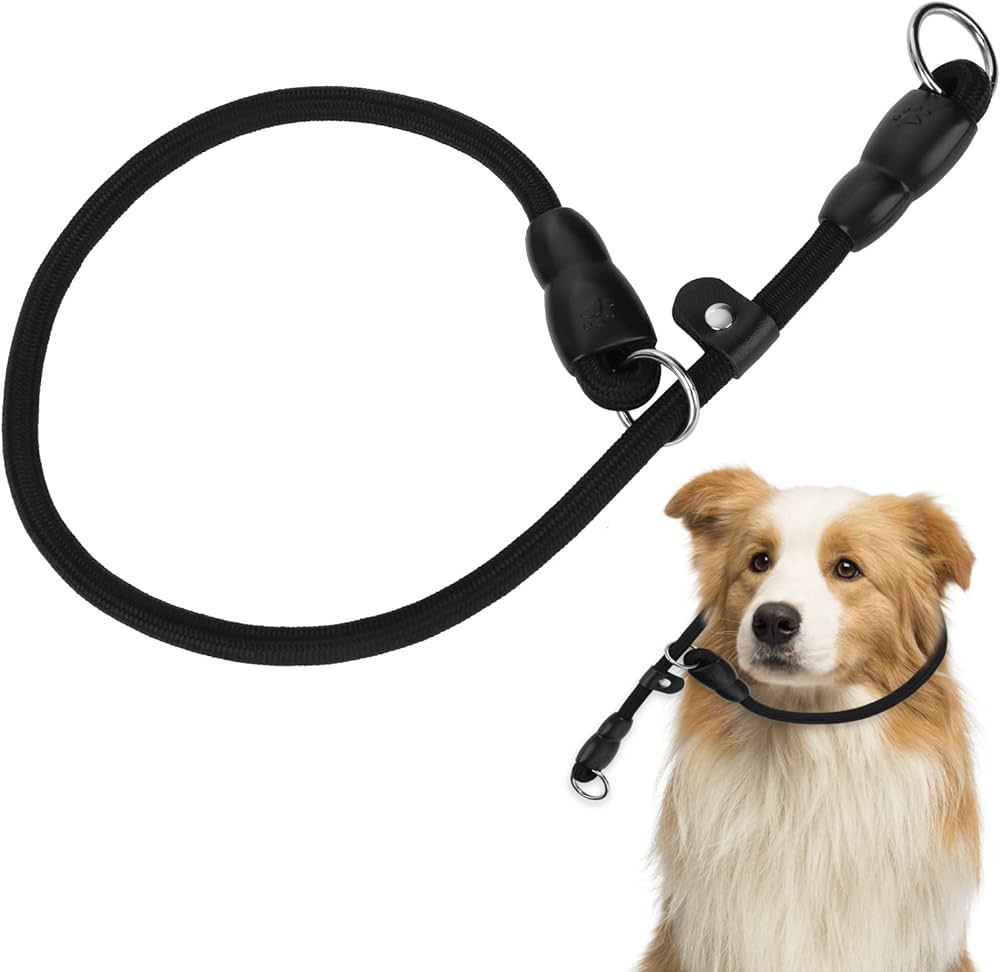
Slip-on collars are easy for your dog to wear. You just slide them over your dog’s head, and they’re ready to go. This makes them a great choice if you need something quick and simple.
They work well for dogs that don’t pull much on their leash. Also, these collars come in many styles and materials. It’s easy to find one that matches your brand loyalty or unique value.
But there are some downsides too. Slip-on collars may not be best for all dogs. This is especially true for dogs who can easily slip out of collars or have larger heads than necks.
Also, adjusting the size for a perfect fit is not as easy as with buckle collars. With buckle collars, you have precise control over the size. For safety, the collar must be tight so your dog can’t get loose. But, it must also be comfy and not choke or hurt their neck.
Buckle Collars: Traditional Choices
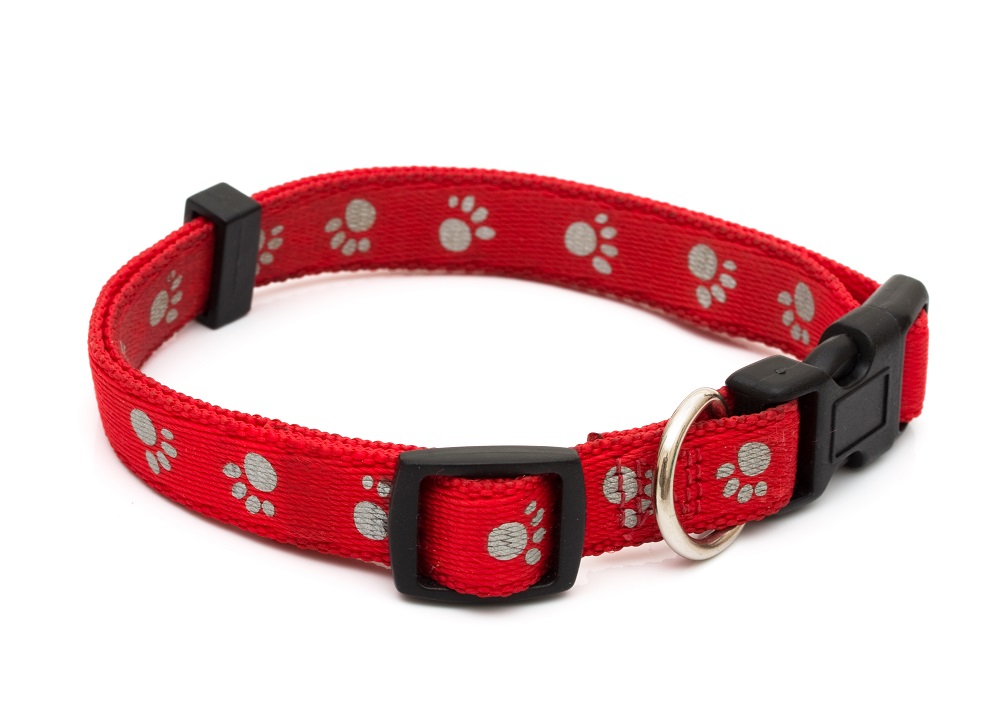
Buckle collars are the classic choice for your dog. They are strong and can last a long time. You measure your pet’s neck to find the right size. This makes sure the collar is not too tight or loose.
Buckle collars come in many materials like nylon or leather. You pick what matches your pet’s style.
These collars have holes to adjust the fit as your dog grows or changes weight. They make it easy to attach tags for ID and safety. The collars are for businesses that aim to sell high-quality, customizable products. They offer a range of buckle collars to meet many customer preferences. This ensures pets look stylish while staying safe.
Martingale Collars: A Safe Option
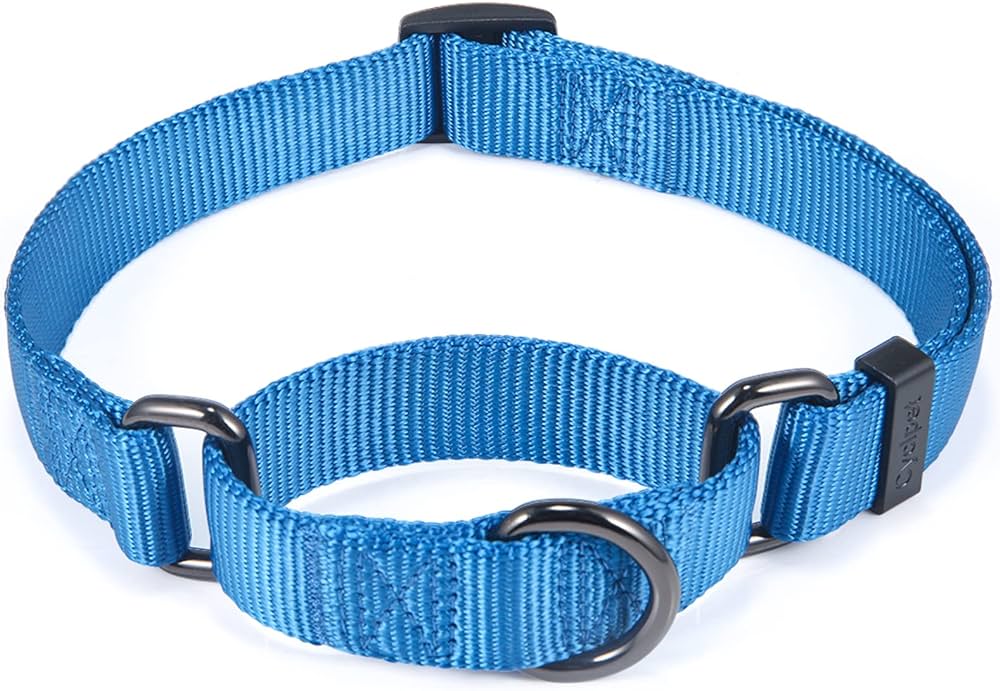
Martingale collars are great for keeping your dog safe. They softly tighten as a dog tugs on the leash, but do not choke them. This design helps you control your pet without hurting them. It’s beneficial if they tend to pull hard or try to escape their collar.
They softly tighten as a dog tugs on the leash, but do not choke them. Traditional collars can easily slip off them.
Choosing a martingale collar means picking safety and comfort for your dog. You need to measure your pet’s neck to ensure the right fit. A good martingale will fit well around the neck. It will tighten enough for control during walks or training. But, it won’t cause discomfort or harm.
Make sure it’s long-lasting and adaptable enough to accommodate your dog’s size changes. This type of collar keeps them secure during outdoor adventures. It is a great choice for pet safety and practical training.
Prong Collars: Understanding Its Use
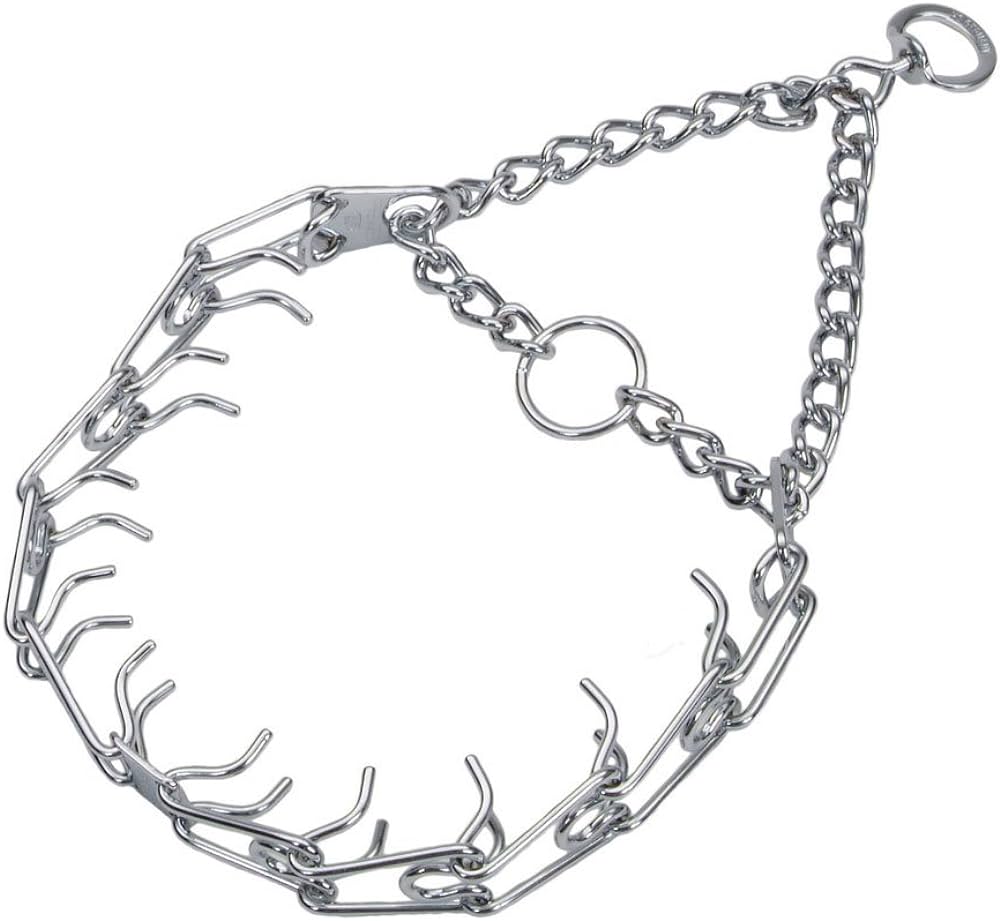
Prong collars, often called pinch collars, have metal links. The links have prongs that rest against a dog’s neck. People use them for training and controlling dogs that pull on their leashes.
These collars work by applying pressure evenly around the neck when the dog pulls. They mimic the correction a mother dog gives to her puppies. It’s crucial to know how to use these collars right to avoid hurting your pet.
You need to choose a collar that fits your dog well. A poorly fitting prong collar can cause discomfort or injury. Always check the collar’s fit and watch your dog’s reaction during use.
Consulting with a pro can also help you understand how to use this tool well for training. It can help you avoid scaring or harming your pet.
Harnesses: Alternative for Better Control
Harnesses give you more control over your dog without putting pressure on their neck. This is especially good for dogs who pull on their leash or have breathing issues. A harness spreads the force across more of the dog’s body. This makes walks safer and more comfortable.
Choose the right size and type of harness for your pet. Consider their shape and activities.
There are different types of harnesses for various needs. For example, a no-pull harness helps train dogs not to pull during walks. It does this by gently redirecting them. For active dogs, look for a durable, adjustable harness that fits well. They will wear it on hikes and runs with you.
Always measure your dog before buying to ensure a perfect fit. This way, both you and your pup can enjoy outdoor adventures safely and happily.
Conclusion
Choosing the right dog collar involves several key points. Think about your furry friend’s size, what you like to do together, and comfort. The type of collar matters a lot too! Don’t forget to measure your pet’s neck before buying.
From slip-ons to prong collars, each has its pros and cons. This guide helps you pick the best fit for both style and safety needs.
Ready to find the perfect collar or harness? Our team at Jessica@bestoneinc.com is here to help you. We will help you match your business with top products!
FAQs
1. What should I look for in a dog collar before buying?
Before purchasing a dog collar, consider the target market and consumer preferences. Think about the size, material, and design that would best suit your customer’s needs. Also, research market trends to find popular features.
2. How do I know if a dog collar is priced right?
To set the right price, look at your competitors’ prices. Also, understand your costs. Use dynamic pricing to adjust to demand. It ensures that you’re offering value equal to or greater than the price.
3. Can market research help me choose the proper dog collars for my business?
Yes! Thorough market research can show many insights. They reveal how customers behave and buy. This data helps you select dog collars that meet your customers’ specific needs.
4. Why is it important to understand my target audience when selling dog collars?
Understanding your target audience enables you to adjust your marketing strategies more successfully. Knowing their psychographic segmentation helps. It helps in creating branding and messaging that resonates with them.
5. How can landing pages boost my online sales of dog collars?
A well-designed landing page targeted at your specific audience can significantly increase conversions. Make sure it’s easy to use. It should highlight key values. It should have clear calls to action. These guide visitors to make a purchase.
6. What role does analytics play in selling dog collars online?
Analytics provide crucial insights into how customers interact with your e-commerce platform. Analyzing this data allows you to optimize your marketing efforts. You can improve products. This will ultimately drive more sales.
Further Reading:
How Do I Choose A Well Dog Leash
How Do I Choose A Suitable Dog Raincoat
How Do I Choose A Perfect Dog Coat
How Do I Choose A Durable Dog Toy
In case you have any questions or inquiry about dog gear, contact us now.


